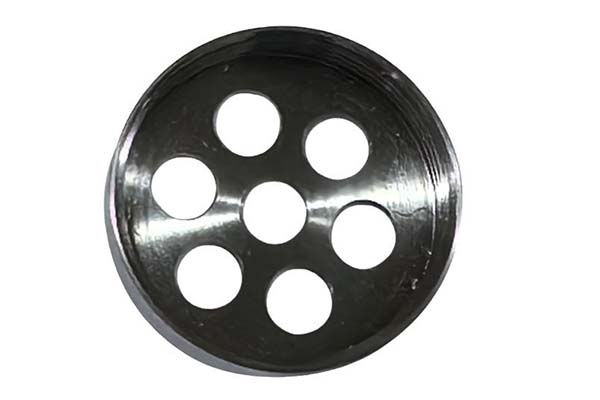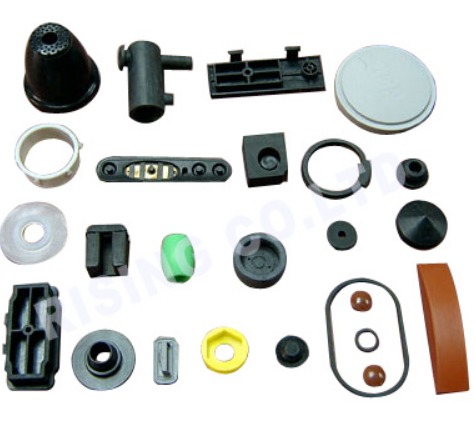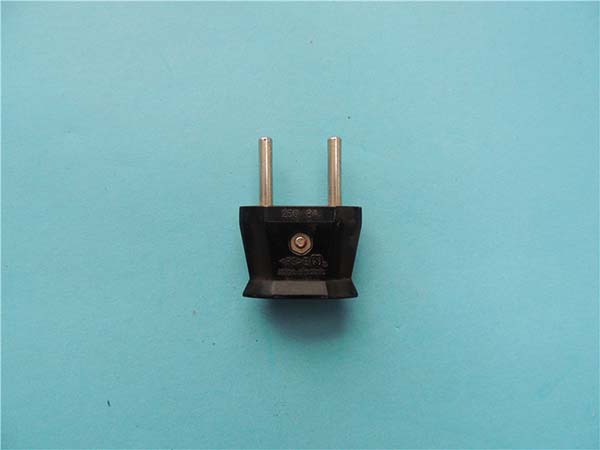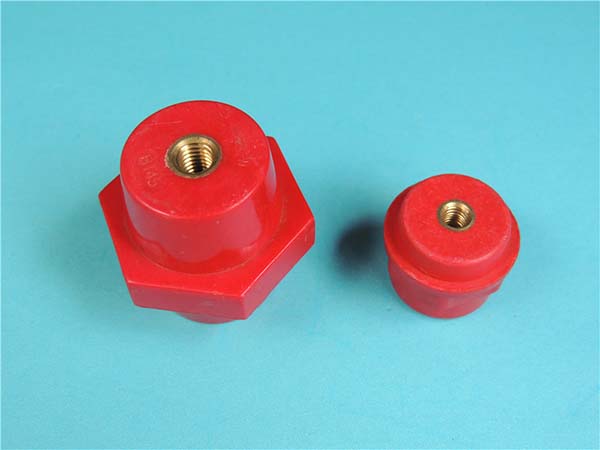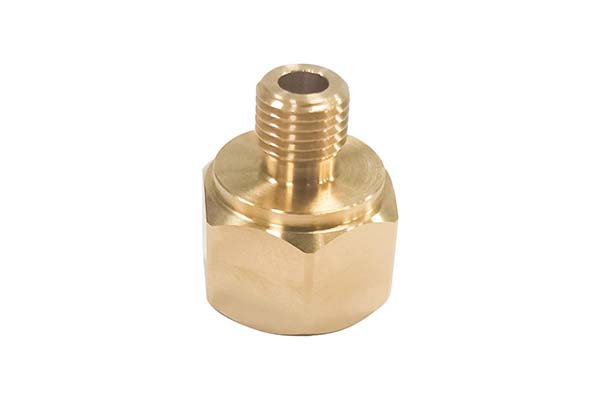In the world of manufacturing, machining costs can make or break a project's profitability. Whether you're a small - scale manufacturer or a large - scale enterprise, understanding what drives these costs and how to manage them is crucial. Let's delve into the various aspects of machining costs, from their components and drivers to techniques for reduction, estimation, analysis, and industry - specific considerations.
Cost Components
Material Costs
Material costs often top the list of machining cost components, especially when dealing with high - value materials like titanium or exotic alloys. The price of materials can fluctuate significantly based on factors such as type, quality, availability, and market demand. For instance, in the aerospace industry, where materials must meet stringent quality and performance standards, material costs can account for up to 50% of the total machining cost. To manage these costs, consider alternative materials that meet your performance requirements but are more cost - effective. Additionally, negotiate favorable pricing with suppliers and optimize material usage through efficient design and production processes.
Labor Costs
Labor costs are another major contributor to machining expenses, particularly for complex or high - precision operations that demand skilled operators. Labor costs include wages, benefits, training, and overtime. A recent study indicates that labor costs typically range from 20 - 30% of the total machining cost. To cut labor costs, invest in automation and advanced manufacturing technologies that can perform tasks more efficiently with less human intervention. Moreover, provide continuous training and development opportunities for your employees to enhance their skills and productivity.
Overhead Costs
Overhead costs encompass all the indirect expenses associated with running a machining operation, such as rent, utilities, equipment maintenance, and insurance. These costs can be challenging to manage as they are often fixed and not directly tied to production volume. However, implementing cost - saving measures like energy - efficient lighting and equipment, reducing waste, and optimizing facility layout can help lower overhead costs and improve the bottom line.
Tooling Costs
Tooling costs involve the expenses of purchasing, maintaining, and replacing cutting tools, fixtures, and other equipment used in machining operations. These costs can be substantial, especially for high - volume production runs or complex machining tasks that require specialized tools. To manage tooling costs, opt for high - quality tools designed for longer lifespan and better efficiency. Implement a tool management system that tracks tool usage, monitors wear, and schedules replacements to prevent unexpected downtime.
Maintenance Costs
Maintenance costs are essential for keeping machining equipment in good working order. This includes routine tasks like oil changes, filter replacements, and equipment calibration, as well as more complex repairs and upgrades. Maintenance costs can be a significant portion of machining costs, particularly for older or frequently used equipment. To reduce these costs, establish a preventive maintenance program that schedules regular maintenance tasks and inspections to identify and address potential issues before they escalate. Invest in high - quality equipment known for its reliability and ease of maintenance.
Energy Costs
Energy costs cover the expenses of powering machining equipment and the facility. They can be a significant part of machining costs, especially for high - power equipment or facilities operating for extended hours. To reduce energy costs, implement energy - saving measures such as installing energy - efficient lighting and equipment, using variable - speed drives to control motor speed, and optimizing facility layout to minimize energy consumption. Consider switching to renewable energy sources like solar or wind power to reduce your carbon footprint and long - term energy costs.
Waste Disposal Costs
Waste disposal costs are associated with getting rid of waste materials generated during machining operations, such as metal chips, coolant, and lubricants. These costs can be substantial, especially for hazardous waste materials that require special handling and disposal. To cut waste disposal costs, implement waste reduction and recycling programs to minimize waste generation and recycle as much waste as possible. Ensure that your waste disposal practices comply with all relevant environmental regulations to avoid costly fines and penalties.
Cost Drivers
Machine Utilization
Machine utilization is a crucial cost driver in machining operations as it directly impacts equipment productivity and efficiency. High machine utilization rates indicate effective and efficient equipment use, while low rates can lead to increased costs due to idle time and underutilization of resources. To boost machine utilization, implement a production scheduling system that optimizes equipment and resource use. Invest in flexible and adaptable equipment that can handle different production requirements, maximizing machine utilization rates.
Production Volume
Production volume is another key cost driver. Higher production volumes generally result in lower per - unit costs as fixed costs like equipment depreciation and setup costs are spread over more units. To take advantage of economies of scale, consider strategies to increase production volume, such as expanding your customer base, introducing new products, or increasing production capacity. Negotiate favorable pricing with suppliers based on your production volume to lower material costs.
Material Quality
Material quality significantly affects machining costs. While higher - quality materials may be more expensive upfront, they can lead to lower long - term costs by reducing rework, scrap, and warranty claims. To balance material quality and cost, conduct a cost - benefit analysis to determine the optimal material quality for your products and production processes. Work closely with suppliers to ensure you receive high - quality materials at a competitive price.
Process Complexity
Process complexity is a major cost driver. Complex machining operations like multi - axis machining, micro - machining, or precision machining often require specialized equipment, skilled operators, and advanced programming techniques, all of which contribute to higher costs. To manage process complexity, simplify product designs and machining processes whenever possible. Invest in employee training and development to enhance their skills in handling complex machining operations.
Labor Skills
Labor skills are essential in machining operations, especially for complex or high - precision tasks. Skilled labor may be more expensive, but it can lead to higher productivity, better quality, and lower long - term costs. To attract and retain skilled labor, offer competitive wages and benefits, provide ongoing training and development opportunities, and create a positive work environment. Invest in automation and advanced manufacturing technologies to reduce reliance on skilled labor by performing tasks more efficiently with less human intervention.
Technology Level
The technology level is a key cost driver. Advanced manufacturing technologies such as 3D printing, robotics, and artificial intelligence can significantly improve machining process efficiency, productivity, and quality. However, implementing and maintaining these technologies can be costly. To determine the optimal technology level for your machining operations, conduct a cost - benefit analysis to evaluate the potential benefits and costs of new technologies. Stay updated on the latest technological advancements in the machining industry and invest in technologies that offer a long - term competitive advantage.
Supply Chain Efficiency
Supply chain efficiency impacts machining costs as it affects the availability, cost, and quality of materials and components. An optimized supply chain can help reduce costs by minimizing inventory levels, improving delivery times, and negotiating favorable pricing with suppliers. To enhance supply chain efficiency, implement a supply chain management system that streamlines procurement, inventory, and logistics processes. Build strong relationships with suppliers to ensure you receive the best service and pricing.
Cost Reduction Techniques
Lean Manufacturing
Lean manufacturing is a systematic approach to eliminating waste and improving efficiency in manufacturing processes. By implementing lean principles like value stream mapping, 5S (sort, set in order, shine, standardize, sustain), and continuous improvement, you can reduce costs, enhance quality, and increase productivity in machining operations. For example, eliminating unnecessary steps in machining processes can reduce cycle times and increase throughput while minimizing errors and defects.
Automation
Automation is an effective cost - reduction technique. Automated equipment such as robotic arms, CNC machines, and automated material handling systems can perform tasks more efficiently with less human intervention. This reduces labor costs, improves quality, and increases productivity. Automation also reduces the risk of errors and injuries associated with manual labor and improves the consistency and repeatability of machining processes.
Process Optimization
Process optimization involves analyzing and improving machining processes to eliminate waste, reduce cycle times, and enhance quality. Using techniques like process mapping, root cause analysis, and statistical process control, you can identify and address inefficiencies and problems. For instance, optimizing cutting parameters can reduce tool wear, improve surface finish, and increase productivity while decreasing rework and scrap.
Value Engineering
Value engineering is a systematic approach to enhancing product or service value by analyzing functions and costs. By identifying and eliminating unnecessary functions and features and finding more cost - effective ways to perform necessary functions, you can reduce costs without sacrificing quality or performance. For example, using a less expensive material that still meets performance requirements or simplifying product design to reduce the number of parts and manufacturing steps can lower machining costs while delivering a high - quality product.
Bulk Purchasing
Bulk purchasing is a cost - reduction strategy. Buying materials and components in large quantities allows you to take advantage of volume discounts. Negotiating favorable pricing with suppliers based on purchase volume can reduce material costs and improve the bottom line. Purchasing in bulk also reduces purchase frequency, saving on transportation and handling costs.
Energy Efficiency
Energy efficiency is crucial for cost reduction. Implementing energy - saving measures like installing energy - efficient lighting and equipment, using variable - speed drives to control motor speed, and optimizing facility layout to reduce energy consumption can significantly lower energy costs. Investing in renewable energy sources like solar or wind power further reduces energy costs and contributes to a more sustainable future.
Waste Minimization
Waste minimization is a cost - reduction technique. Implementing waste reduction and recycling programs reduces the amount of waste generated during machining operations. Minimizing waste disposal needs saves on waste disposal costs. Recycling waste materials such as metal chips and coolant recovers valuable resources and reduces reliance on virgin materials, saving on material costs.
Cost Estimation
Historical Data
Historical data is a commonly used method for estimating machining costs. By analyzing past data on material costs, labor costs, overhead costs, and other components, you can identify trends and patterns to predict future costs more accurately. However, it's important to note that historical data may not always be a reliable predictor as factors like changes in material prices, labor rates, and production volumes can affect machining costs.
Standard Costing
Standard costing involves setting standard costs for each cost component based on industry benchmarks, historical data, or engineering estimates. Comparing actual costs to standard costs helps identify variances and take corrective action to improve cost performance. Standard costing is useful for cost control and performance evaluation but requires careful planning and implementation to ensure accurate and up - to - date standard costs.
Activity - Based Costing
Activity - based costing (ABC) assigns costs to specific activities or processes based on resource consumption. Understanding the cost drivers for each activity allows for more accurate cost estimation of producing a product or service. ABC is a more detailed and accurate cost - estimation method than traditional costing but requires more data collection and analysis and may be more complex to implement.
Parametric Estimation
Parametric estimation uses statistical models and algorithms to predict costs based on specific parameters such as part size, complexity, and material type. Analyzing historical data to identify relationships between these parameters and costs helps develop parametric models for estimating costs of new products or projects. Parametric estimation can be quick and accurate but requires significant historical data and statistical analysis to develop reliable models.
Bottom - Up Estimation
Bottom - up estimation involves estimating the costs of each individual component or task in a machining project and then summing them up for the total cost. This method requires a detailed understanding of machining processes and the resources needed for each task but can provide a very accurate total cost estimate. Bottom - up estimation can be time - consuming and labor - intensive but is often used for complex or high - value machining projects where accuracy is crucial.
Top - Down Estimation
Top - down estimation estimates the total cost of a machining project based on high - level factors like the overall project scope, part complexity, and expected production volume. This method is often used for preliminary cost estimates or when detailed information is not yet available. Top - down estimation is quick and easy but may not be as accurate as bottom - up estimation, especially for complex or unique projects.
Simulation
Simulation creates a virtual model of a machining process or system to predict costs and performance. By simulating different scenarios and variables, you can evaluate the impact of changes in material costs, labor rates, production volumes, and other factors on machining costs. Simulation is a powerful tool for cost estimation and process optimization but requires specialized software and expertise for effective development and use.
Cost Analysis
Break - Even Analysis
Break - even analysis determines the point at which total revenue equals total costs, resulting in neither profit nor loss. Analyzing the relationship between fixed costs, variable costs, and revenue helps determine the minimum production volume or sales price needed to break even. Break - even analysis is useful for evaluating the profitability of a machining project or product and for making decisions about pricing, production volume, and cost control.
Cost - Benefit Analysis
Cost - benefit analysis compares the costs of a particular investment or project to the benefits it's expected to generate. Quantifying costs and benefits in monetary terms allows for evaluating the economic viability of the investment or project and making informed decisions on whether to proceed. Cost - benefit analysis is useful for evaluating the potential return on investment (ROI) of new equipment, technologies, or process improvements and for prioritizing investment opportunities.
Sensitivity Analysis
Sensitivity analysis evaluates the impact of changes in key variables such as material costs, labor rates, production volumes, and selling prices on machining costs and profitability. By varying these variables one at a time and analyzing the resulting changes in costs and profits, you can identify the most sensitive variables and develop strategies for managing them. Sensitivity analysis is useful for risk assessment and contingency planning and for making decisions about pricing, production volume, and cost control in the face of uncertainty.
Variance Analysis
Variance analysis compares actual costs to budgeted or standard costs to identify and analyze variances. Understanding the reasons for variances helps take corrective action to improve cost performance and control costs. Variance analysis is useful for cost control and performance evaluation and for identifying areas where cost savings can be achieved.
Life Cycle Costing
Life cycle costing evaluates the total cost of a product or system over its entire life cycle, from design and development to production, use, maintenance, and disposal. Considering all associated costs helps make more informed decisions about design, production, and maintenance strategies to minimize total cost of ownership. Life cycle costing is useful for evaluating the long - term economic viability of a machining project or product and for making investment, design, and production decisions that maximize value over the product's life cycle.
Cost Allocation
Cost allocation assigns costs to specific products, services, or activities based on resource consumption. Accurate cost allocation helps determine the true cost of producing a product or service and make more informed decisions about pricing, production volume, and cost control. Cost allocation can be complex, especially in organizations with multiple products, services, and cost centers, but is essential for accurate cost analysis and effective cost management.
Cost Benchmarking
Cost benchmarking compares your machining costs to those of other companies or industry benchmarks to identify areas for improving cost performance. Benchmarking against best - in - class performers helps identify best practices and strategies for reducing costs and improving efficiency. Cost benchmarking is useful for competitive analysis and continuous improvement and for setting cost reduction goals and targets.
Industry - Specific Costs
Aerospace Machining Costs
Aerospace machining costs are typically higher than in other industries due to the strict quality and performance requirements of aerospace components. These components are made from high - strength, lightweight materials like titanium, nickel alloys, and carbon fiber composites, which are often expensive and difficult to machine. Aerospace machining operations also require high - precision techniques and specialized equipment, contributing to higher costs. To manage aerospace machining costs, work with suppliers specializing in aerospace materials and machining processes who can offer competitive pricing and high - quality products.
Automotive Machining Costs
Automotive machining costs are influenced by factors such as production volume, material costs, and process complexity. High - volume production runs are common in the automotive industry, which can reduce per - unit costs through economies of scale. However, the use of advanced materials like aluminum and high - strength steel, along with the increasing complexity of automotive components, can also drive up machining costs. To manage automotive machining costs, implement lean manufacturing principles, invest in automation and advanced manufacturing technologies, and optimize the supply chain.
Medical Device Machining Costs
Medical device machining costs are affected by the need for high precision, strict quality control, and compliance with regulatory requirements. Medical devices often require specialized materials and machining processes to ensure biocompatibility and functionality. The cost of materials and the complexity of machining operations can be significant. To manage medical device machining costs, focus on design optimization, work with suppliers who understand regulatory requirements, and implement efficient quality control processes.
Electronics Machining Costs
Electronics machining costs are influenced by factors such as the miniaturization of components, the use of advanced materials, and the need for high - precision machining. As electronics become smaller and more complex, the machining processes require greater precision and specialized equipment. Material costs can also be high, especially for materials with unique electrical properties. To manage electronics machining costs, invest in advanced machining technologies, optimize component design for manufacturability, and source materials cost - effectively.
Mold and Die Machining Costs
Mold and die machining costs are driven by the complexity of the mold or die design, the materials used, and the required precision. Molds and dies often require high - quality tooling and skilled operators to achieve the desired accuracy. The cost of materials, such as tool steel, can be substantial. To manage mold and die machining costs, simplify mold designs when possible, use cost - effective materials without sacrificing quality, and implement efficient machining processes.
Consumer Goods Machining Costs
Consumer goods machining costs are influenced by factors such as production volume, material costs, and design complexity. High - volume production of consumer goods can lead to cost savings through economies of scale. However, the use of trendy materials or complex designs to meet consumer demands can increase costs. To manage consumer goods machining costs, balance design aesthetics with manufacturability, negotiate favorable material prices based on volume, and optimize production processes.
Heavy Equipment Machining Costs
Heavy equipment machining costs are affected by the large size of the components, the use of robust materials, and the need for high - power machining equipment. Machining large components requires specialized machinery and skilled operators. Material costs can be high due to the use of thick - walled and high - strength materials. To manage heavy equipment machining costs, invest in appropriate machining equipment, optimize material usage, and improve production efficiency.
Yigu Technology's View
Yigu Technology, as a plastic metal parts custom manufacturing supplier, understands the significance of machining cost management. We believe that a comprehensive approach is key. By collaborating closely with clients from the design phase, we can recommend design modifications that enhance manufacturability and reduce costs. For example, suggesting simpler geometries or more cost - effective materials without sacrificing product functionality. In our own operations, we invest in advanced equipment and training to improve machine utilization and labor skills. Our supply chain management is optimized to ensure timely delivery of high - quality materials at competitive prices. We also implement lean manufacturing principles to eliminate waste and continuously improve our processes, all aimed at providing cost - effective solutions to our clients.
